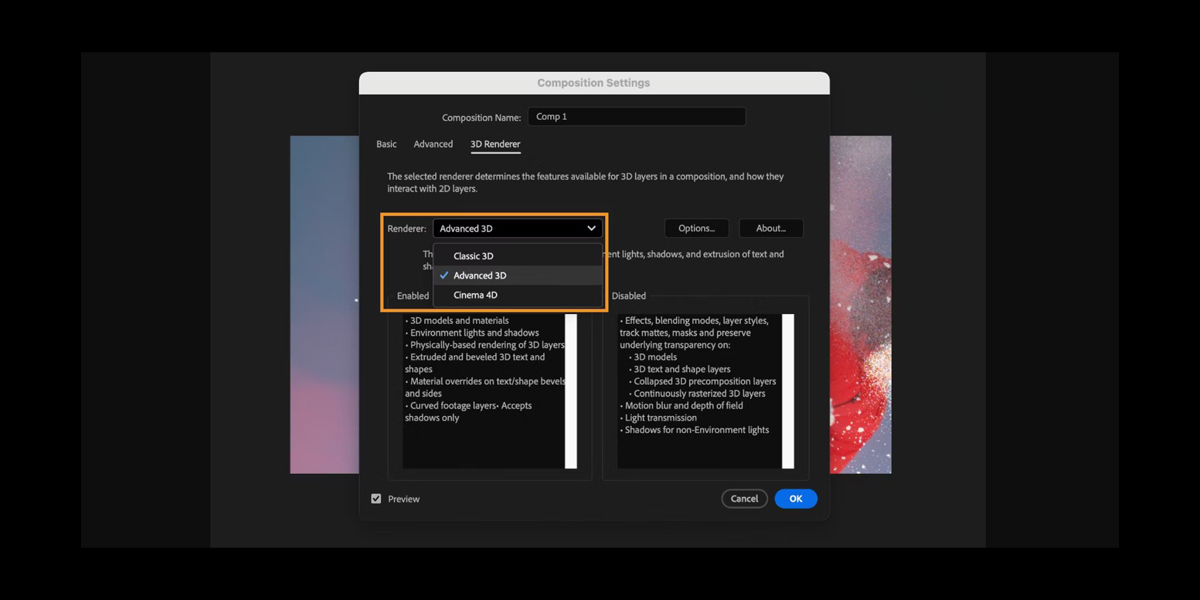Compositing in Adobe After Effects is the art and workflow of combining multiple visual elements into a single, convincing shot. Artists merge live action plates, graphics, text, particles, and 3D renders while matching light, color, motion, and perspective. You manage mattes, track movement, key green screens, and blend layers so separate sources feel like one reality. This guide, Top 10 Compositing Fundamentals in Adobe After Effects, teaches beginners and advanced users how to think, plan, and finish shots with clarity. Our objective is to educate people from basic to advanced levels with a structured, simple style that focuses on results and repeatable methods.
I. Plan The Composite And Story Intent
A strong composite starts with intent. Define the story need, the camera angle, and the final frame first, then gather references for lighting, weather, and atmosphere. Break the shot into plates, background, midground, and foreground. Identify hero elements and supporting elements. List required passes and assets like rotos, clean plates, and motion graphics. Decide the order of operations and where precomps will hold complexity. Create a naming scheme and folder structure so versions remain traceable. When intent guides every choice, you avoid guesswork, reduce rework, and keep visual decisions consistent from the first frame to the last.
II. Manage Color And Bit Depth Correctly
Color management protects detail and keeps elements consistent. Work at 16 bit or 32 bit per channel to avoid banding and to preserve highlight and shadow latitude. Enable project color management and match color spaces across footage, renders, and viewer settings. Linearize the working space when blending light-based effects so adding and multiplying feel physically plausible. Use scopes such as waveform and vectorscope to judge values objectively. Clamp or compress rolloff only at delivery. With consistent color pipelines you can comp images without hidden shifts, keep skin tones stable, and maintain the same look across shots and revisions.
III. Rotoscoping And Mattes With Clean Edges
Clean mattes are the backbone of believable composites. Use Roto Brush for soft, moving edges and traditional masks for graphic shapes. Feather intelligently using inner and outer widths, not a single blur. Track mask vertices when movement is predictable, and switch to paint or patch techniques for hair, smoke, or motion blur. Combine holdout mattes with garbage mattes to isolate subjects and remove unwanted areas. Check edges over bright and dark backgrounds to verify fringing. Always precomp complex mattes and color label them clearly so they can be reused, inverted, and refined throughout the shot without confusion.
IV. Keying Technique And Spill Control
Good keying begins long before pressing the keyer button. Analyze the screen for even exposure, noise, and lens issues, then denoise and balance before pulling a core matte. Use Keylight for initial separation and refine with screen gain, clip black, and clip white. Generate separate edge mattes for semi transparent areas like hair and motion blur. Apply dedicated spill suppression with subtle hue shifts, not global saturation cuts. Repair holes using inside masks and light wrap to blend edges. Aim for a stable matte that holds over the full timeline, then freeze settings to prevent drifting results during review and render.
V. Tracking, Stabilization, And Reapply Motion
Tracking anchors elements to real motion. Use point tracking for simple pins, planar tracking for surfaces like signs, and the 3D Camera Tracker for full scene integration. Stabilize plates before heavy work to make roto and paint faster, then reapply motion later using the invert of the stabilization. When using corner pin, precompose graphics at the target aspect and set proper field of view. Blend sliding errors with subtle mesh warp or turbulence displace. Always check parallax at intersections and occlusions. Well planned tracking avoids swimming layers, preserves depth cues, and keeps the audience focused on story rather than technical artifacts.
VI. Order Of Operations, Precomps, And Blend Modes
The order you apply operations changes the look. Perform geometric fixes and tracking first, then keying and rotoscoping, followed by relighting and grading. Use precomps to isolate tasks and to bake heavy effects. Set blend modes intentionally, using screen or add for light, multiply for shadows, and overlay for contrast control. Collapse transformations when nesting vector or 3D layers to preserve quality and exact transforms. Keep adjustment layers local to the elements they affect, not across the whole comp. A disciplined hierarchy makes changes predictable, prevents recursion problems, and speeds previews when deadlines and client feedback arrive together.
VII. Light, Shadow, And Relighting For Unity
Light unifies elements. Match key direction, fill ratio, and color temperature so objects share the same environment. Create light wrap from the background to soften edges. Use luma or normal maps to fake relighting, and paint grayscale shadow passes that multiply onto ground and contact areas. Add subtle glows and volumetric rays that respect occlusion using masks and depth references. Balance specular highlights with curves rather than global exposure. When highlights, shadows, and ambient levels agree, layers fuse naturally, depth reads stronger, and the scene feels photographed rather than assembled from separate pieces in software.
VIII. Depth, Parallax, And Camera Integration
Depth sells realism. Separate the scene into planes, and use a 3D camera to create natural parallax as the camera moves. Build a depth pass or a synthetic z map to drive fog, focus, and atmospheric perspective. Defocus foreground and background with camera lens blur using the same aperture and bokeh characteristics as the plate. Add soft particles that intersect geometry without hard edges. Animate subtle handheld drift or micro jitter to tie layers together. When depth cues align with movement and focus behavior, the audience reads scale correctly and accepts the composite as a continuous space with believable distances.
IX. Color Matching And Grading For Cohesion
Color unifies intent. Match exposure first using scopes and reference points, then align contrast with curves to fit the target plate. Balance white point and hue shifts to place elements in the same light family. Use selective hue versus saturation adjustments to control problem ranges such as greens and cyans. Reintroduce filmic contrast with a controlled S curve and subtle bloom on highlights. Finish with a look layer or a LUT that is consistent across shots. By matching values before stylizing, you avoid clipping, hold texture in bright areas, and maintain skin tone integrity across the sequence.
X. Finishing, Texture, Motion Blur, And Delivery
Finishing details make shots seamless. Add motion blur to tracked inserts so shutter characteristics match the plate. Restore film grain or noise at the end of the chain so synthetic elements sit with the source. Apply subtle chromatic aberration and vignette only if present in the plate. Check edge treatment at one hundred percent magnification to remove halos and mismatched sharpening. Render to a mastering codec with proper alpha handling, premultiplied or straight as required. Name versions clearly and archive source assets. Disciplined finishing protects quality, speeds revisions, and ensures delivery meets editorial and broadcast needs.

